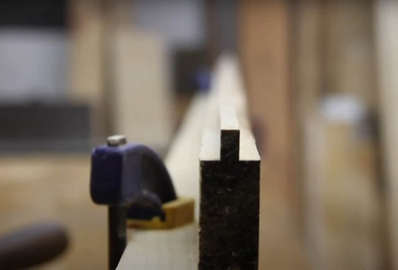How To Cut Bamboo Flooring
Cutting bamboo flooring can seem like a daunting task, but with the right tools and techniques, it can be a…
Cutting bamboo flooring can seem like a daunting task, but with the right tools and techniques, it can be a breeze. As someone who has cut bamboo flooring before, we understand the importance of precision and safety when it comes to this process.
In this article, we will guide you through the steps of measuring and marking your cuts, choosing the right saw, and cutting techniques for different types of cuts.
Before you start cutting, it’s important to have the right tools on hand. A saw that is specifically designed for cutting bamboo flooring is essential. You’ll also need measuring tools such as a tape measure and a square, as well as a marking tool such as a pencil or chalk.
With these tools in hand, you’ll be ready to start measuring and marking your cuts. So let’s get started!
Measuring and Marking Your Cuts
You’re about to embark on a precise process that will ensure your new flooring fits like a glove – measuring and marking your bamboo planks!
Before you start cutting, there are some preparation steps you should take to ensure everything goes smoothly. First, make sure you have all the necessary tools: a measuring tape, a pencil, a square, and a saw. You’ll also need a clean and flat surface to work on.
Once you have your tools and workspace ready, it’s time to measure and mark your cuts. Start by measuring the length of the plank you need to cut and mark it with a pencil.
Then, use a square to draw a straight line across the plank where you want to make your cut. This will ensure that your cut is straight and accurate. Repeat this process for each plank you need to cut.
Common mistakes when measuring and marking cuts include not measuring accurately, not using a square to draw a straight line, and not double-checking measurements before making cuts. These mistakes can cause your planks to be too long or too short, or to not fit together properly.
To avoid these mistakes, take your time and double-check your measurements before making any cuts. Remember that it’s better to measure twice and cut once, rather than the other way around.
Now that you know how to measure and mark your cuts, it’s time to move on to the next step: cutting your bamboo planks. With the right tools and careful measurements, your new flooring will fit perfectly and look beautiful.
Choosing the Right Saw
To make sure you’re using the proper tool for the job, you’ll want to choose a saw that can easily glide through the dense, yet flexible material of your bamboo planks. A circular saw with a fine-toothed blade is a popular choice for cutting bamboo flooring. However, it’s important to note that the blade should be sharp and in good condition to prevent any splintering or chipping of the bamboo.
Saw maintenance is also crucial to ensure a smooth and efficient cutting process. Before starting, make sure the blade is clean and free of any debris or rust. You can also apply a lubricant to the blade to reduce friction and prevent overheating.
Additionally, it’s important to wear proper safety gear, such as goggles and gloves, to protect yourself from any flying debris or accidental cuts. When using a circular saw, it’s important to keep a steady hand and maintain a consistent speed throughout the cut.
It’s also recommended to make a test cut on a scrap piece of bamboo to ensure the blade is cutting smoothly and to adjust the depth of the blade accordingly. By choosing the right saw and taking proper precautions, you can easily and safely cut your bamboo flooring to the desired size and shape.
Cutting Techniques for Different Types of Cuts
It’s imperative to utilize the appropriate cutting techniques that are specific to the desired type of slice when working with bamboo flooring.
For straight cuts, it’s best to use a table saw or a circular saw with a fine-toothed blade. Make sure to measure and mark the cut line accurately before making the cut. Use a straight edge or a guide to ensure a clean and straight cut.
For angled cuts, a miter saw or a compound miter saw is the best tool to use. These saws have adjustable angles that allow for precise cuts at different angles. Make sure to set the saw to the correct angle and use a clamp or a hold-down to secure the bamboo flooring in place before making the cut. It’s also important to use a fine-toothed blade to prevent splintering and ensure a clean cut.
When making any type of cut, it’s important to wear safety gear such as eye protection and ear protection. Always follow the manufacturer’s instructions for the saw and the blade, and take your time to ensure a safe and accurate cut.
With the right tools and techniques, cutting bamboo flooring can be a breeze and result in a beautiful finished product.
Finishing the Edges of Your Cuts
Now that you’ve mastered the art of cutting your beautiful bamboo flooring, it’s time to give those edges a finishing touch that will make them shine.
One of the most important steps in finishing your cuts is sanding. Sanding not only smooths out any rough edges or splinters, but it also prepares the surface for staining or sealing. When sanding bamboo, it’s important to use a fine grit sandpaper to avoid damaging the natural grain of the wood.
Once you’ve sanded your cuts, you have the option to stain them to match the rest of your flooring or to add a unique touch of color. There are many staining options available, from natural wood tones to bold and vibrant colors. When choosing a stain, it’s important to consider the overall look and feel of your space, as well as the durability and longevity of the product.
After staining, you can finish off the edges with a sealant to protect them from wear and tear. A clear polyurethane sealant is a great option as it adds a layer of protection without altering the color or finish of the stain.
Applying a sealant is a simple process that involves brushing on a thin layer and allowing it to dry completely before adding additional coats. With a little bit of sanding, staining, and sealing, your bamboo flooring will look as good as new, and the edges will have a polished and professional finish.
Tips for a Smooth and Safe Cutting Experience
Achieving a smooth and safe experience while cutting bamboo flooring requires careful attention to detail and a deep understanding of the tools used. Here are some tips to help you achieve a smooth and safe cutting experience:
-
Cutting angles: When cutting bamboo flooring, it’s important to pay attention to the angle of the cut. A 45-degree angle is the most common angle used for cutting bamboo flooring. To achieve this angle, use a miter saw or a circular saw with a miter gauge.
-
Safety precautions: Safety should always be a top priority when working with power tools. Always wear safety glasses and ear protection when using a saw. Make sure the saw blade is sharp and in good condition. Keep your hands and fingers away from the blade at all times. And never wear loose clothing or jewelry that could get caught in the saw.
-
Use the right blade: Using the right blade for the job is essential for achieving a smooth and safe cutting experience. Choose a blade that is specifically designed for cutting bamboo flooring.
-
Take your time: Cutting bamboo flooring requires patience and precision. Rushing through the job can lead to mistakes and accidents. Remember, it’s better to take your time and get it right the first time than to have to redo the job later.
By following these tips, you can achieve a smooth and safe cutting experience when working with bamboo flooring. Remember to always prioritize safety and take your time to ensure a job well done.
Conclusion
So there you have it, cutting bamboo flooring is easy once you know the right techniques and tools to use.
Always make sure to measure and mark your cuts accurately before cutting, and choose the right saw for the job.
Remember to use the appropriate cutting technique for each type of cut, and finish the edges of your cuts to ensure a polished look.
Keep in mind that safety is always a top priority when cutting bamboo flooring.
Always wear protective gear such as safety goggles and gloves, and use caution when operating power tools.
By following these tips and techniques, you can successfully cut bamboo flooring to fit your desired space and create a beautiful and functional flooring solution.



